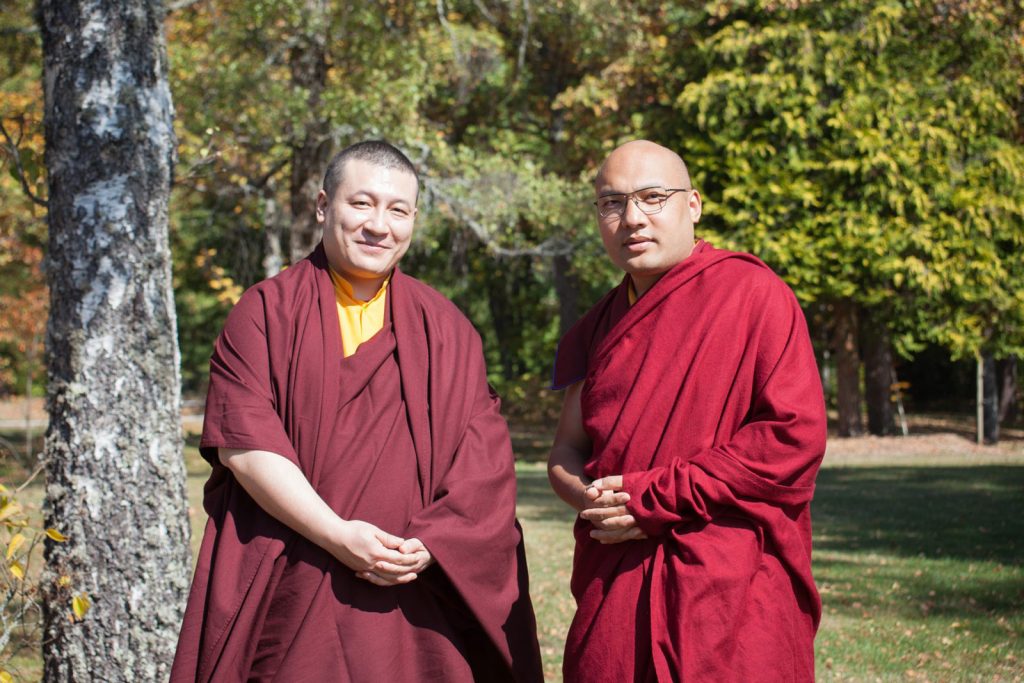Buddha’s Not Smiling – This is the second book that I have read on the lineages of trulkus. The first one was on the Dalai Lamas and now on the Karmapas.

At the centre of this book are Thrinley Thaye Dorje (L) and Ogyen Thrinley Dorje who met for the first time in October 2018.
The Karmapas were the first to establish a trulku system, three hundred years before the Dalai Lamas appeared. The first Karmapa, Duesum Khyenpa, was a contemporary of Phajo Drugom Zhipo in Bhutan. The trulku system is a unique feature in the form of Buddhism that is present in the Himalayan and Tibetan region.
Trulku system appeared at a time when Buddhist monasteries started owning large properties and influenced local administration and politics. Monasteries operated labrangs which are like a monastic corporation. As labrangs gained influence in politics, politics tried to influence which lamas headed the labrangs. Influential leaders would place the monk of their favour as the abbot of monasteries.
To keep politics away, the Karmapas reincarnated in the form of trulku and served to promote dharma and safeguard their labrangs. Until a trulku came of prominence, regents would take control of the monasteries. As seen with Dalai Lamas (my other post), the gap between the death of one and until the attainment of majority of the next was a period of uncertainty. This was the period that was prone to politics.
This book on the controversy of two candidates for the 17th Karmapa sheds light on several important issues. This event was the playground of various political powers trying to use the reincarnate of the Karmapa for their own political gains. We see that the reincarnate is exploited both by the lamas themselves, the aristocrats and elites of influence and finally party politics.
At the time when events unfolded, Sikkim was one of the new states in India where democracy and party politics were new. Though religion and politics are separate under the Indian constitution, we can see how Buddhist lamas and their followers are used to garner votes (much like how popular Hindu sadhus are used in current Indian politics).
This brings me to appreciate two merits that I see in Bhutan. The Central Monastic Body has trulkus in them upholding the dharma activities, but when it comes to administration, the head of the monastic body, the Je Khenpo is selected based on merit. This gives two advantages. There is a continuity of leadership and guidance – we have had seventy Je Khenpos since Zhabdrung Ngawang Namgyal appointed the first one in 1651. The politics and baggages that come with the recognition of trulkus, should there be any, are left at the level of the individual and it does not affect the system.
The second is keeping religion above politics under Bhutan’s constitution. The Karmapa case ends in a tragic damage on both sides. Neither the lamas nor Chief Minister Nar Bahadur Bhandari benefit out of politicking. This is a case study that unfolds in settings very much familiar to Bhutan and it is a good read. I recommend this book to all.
Note: This is the fifth book on the two candidates for the 17th Karmapa. As clearly as it is mentioned in the book, it is not for ordinary people like us to make a judgement on who the real reincarnate is.